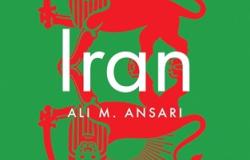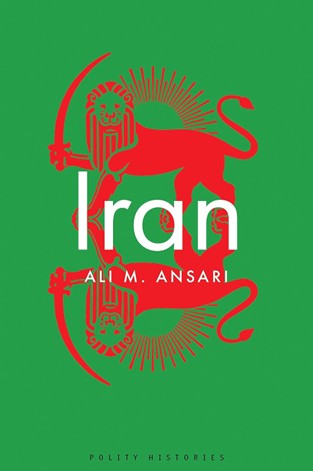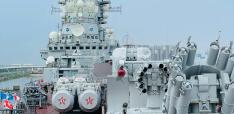Book Review - Iran

Iran by Ali Ansari. Cambridge: Polity 2024. Polity Histories Series. 160 pp., £45 hardcover 9781509541508, £12.99 paperback 9781509541515, £11.99 e-book 9781509541522
Ali Ansari’s Iran is a concise yet densely written work that enriches the analysis of Iran's history by situating its contemporary politics within a historical context spanning the past century. He examines trends over the last two decades in the Islamic Republic, culminating in the nationwide uprisings following the death of Mahsa Jina Amini in the custody of the morality police in September 2022. This moment is framed within the legacy of the 1906 Constitutional Revolution, which called for fundamental rights and the rule of law. Ansari argues that these demands were curtailed by the Islamic Revolution but have continued to shape subsequent events.
Additionally, Ansari explores the responses of various Iranian states—from the late Qajar and Pahlavi monarchies to the post-1979 Islamic Republic—to these social and political pressures, employing reform, but by and large repression, and thereby failing to put forth a political framework that would meet the mounting political demands for accountability and rule of law. He also examines how successive Iranian states since the 1906 revolution, alongside the elite and society at large, have grappled with challenges posed by the West and the forces of modernity throughout key historical events. The interplay between state dynamics and external influences is a central theme of the book.
The main thrust of the argument in this book is that significant events over the past century have profoundly influenced the current state of affairs in Iran. The post-1979 revolutionary state, while restructured, retains many foundations and civil structures that trace back to the pre-revolutionary era. The book is organised into eight chapters, each focusing on specific historical periods and the events that followed. It begins with the 1906 Constitutional Revolution and the rise of the modern state under the Pahlavi monarchy, progressing through post-revolutionary Iran and the uprisings that had shaken the country for months following September 2022.
 Chapter 1 outlines the ideas of a modern state with separation of powers, limited power of the king, a legislature, and a functioning state, by dealing with the 1906 Constitutional Revolution. The revolutionaries were successful for a time, but faced challenges in governing a country lacking modern institutions and a modern legal framework.
Chapter 1 outlines the ideas of a modern state with separation of powers, limited power of the king, a legislature, and a functioning state, by dealing with the 1906 Constitutional Revolution. The revolutionaries were successful for a time, but faced challenges in governing a country lacking modern institutions and a modern legal framework.
Chapter 2 details the rise of Reza Shah and the establishment of a modern state in Iran. Ansari argues that the rise of Reza Shah to power was as much a result of his own ambition as it was a response to the need of Iran's elites for a strongman, although he was also a favorable candidate for the British, who were concerned with reducing their direct engagement in Iran. Ansari then describes Reza Shah’s wholesale reforms during his tenure as Prime Minister and after he became the Monarch, founding the Pahlavi Monarchy. These included modernization measures, the creation of a modern legal framework and judiciary, and the development of transport infrastructure. Impressive as these developmental achievements were, the criticism that can be leveled against Reza Shah is that such developments were carried out in an autocratic fashion without engendering a modern empowered citizenry.
Chapter 3 covers the aftermath of the Anglo-Soviet invasion in 1941 and Reza Shah's abdication, along with the early years of Mohammad Reza Shah Pahlavi, particularly the oil crisis and the push for oil nationalization. Ansari discusses both domestic and international tensions surrounding the nationalization. While the U.S. initially supported the prime minister, Mossadegh, Cold War considerations and oil interests led to a shift in American policy under President Eisenhower, eventually backing a coup against him. Ansari maintains that domestic factors might also have played a role in the coup. At the same time, it is pointed out that the decision to overthrow Mossadegh was largely made in Washington and London. Despite Mossadegh's downfall, his nationalist movement continued to influence Iranian political struggles.
Chapter 4 examines the economic and social reforms of the Pahlavi State, known as the White Revolution, initiated under the influence of the United States. The Shah saw the reforms' potential to solidify his (autocratic) power, and suppressed clerical opposition, notably from Ayatollah Khomeini. Additionally, there was a heavy investment in economic plans, and increasing oil revenue-driven investments. Ansari also examines the Shah's strategy for neutralizing political opposition, balancing repression of leftist groups with efforts to co-opt the religious establishment through policies like reopening mosques and promoting spirituality.
Chapter 5 discusses the 1979 Islamic Revolution, which toppled the Shah, which began with demonstrations in January 1978. The new Islamic regime that emerged in place of monarchy, combined Islamic and republican elements. The revolution's Islamic aspects solidified with the removal of the nationalist faction and power struggles between leftists and Islamists, particularly among radical students supporting Khomeini. Events such as the U.S. hostage crisis and the Iran-Iraq War further entrenched the regime's anti-American stance and enabled power consolidation at home, notably through revolutionary institutions like the Islamic Revolutionary Guards Corps (IRGC).
Chapter 6 discusses the move towards rationalization of the Islamic Republic post-Khomeini during Rafsanjani's presidency (1989-1997) and the rise of the reformist Khatami. Khatami's reforms led to expanded press freedoms and public debates, but faced backlash from hardline conservatives, culminating in incidents like the chain murders of intellectuals and violent responses to the 1999 student protests. The reformist agenda was further stifled when Khamenei intervened to block press liberalization efforts after the 2000 parliamentary elections.
Chapter 7 explores the rise of a new brand of conservatism, evident with the emerging principalists rooted in economic populism and religious revival, set against the decline of reformist politics culminating in Ahmadinejad's election in 2005. Ansari discusses Ahmadinejad's populism and the aftermath of the disputed 2009 presidential election, which resulted in political repression and a decline in public trust, with a clear divide between reformist aspirations and the reality of governance.
Chapter 8 explores nuclear negotiations culminating in the Joint Comprehensive Plan of Action (JCPOA) in 2015 and its aftermath. Ansari notes Ahmadinejad's portrayal of the nuclear program as a national right, contrasting with President Rouhani’s framing of it as a means for economic opportunity post-sanctions. The chapter critiques the JCPOA for lacking domestic political consideration and congressional approval, making it vulnerable to shifts in U.S. leadership.
Overall, this book provides valuable insights into Iranian politics and history, offering a concise yet dense account of key events from 1906 to the present. This includes a comprehensive analysis of post-revolutionary Iran, particularly following the 2009 elections. In this context, Ansari highlights the role of informal networks and power centers—what he refers to as “committees”—which undergird the autocracy of the Islamic Republic. The author emphasizes the centrality of the Supreme Leader, his extensive authority, and his considerable influence over the country’s policies, drawing comparisons to the system under the Shah.
Although the book provides important historical and political analysis, it could benefit from a more in-depth discussion of the "crisis of authority", a concept often conflated with the crisis of legitimacy. Ansari engages with this idea more thoroughly in his 2010 book on the 2009 presidential election and the subsequent protests, making further elaboration in this work particularly relevant. Moreover, a deeper exploration of the socio-economic dimensions of the 1979 revolution would strengthen the narrative. The 2016 and 2019 protests, for instance, could be more clearly tied to economic grievances that lay at the heart of the revolution’s promises.
Published in early 2024, this work remains a timely and relevant study, particularly in light of the recent joint Israeli and U.S. attacks on Iran. Thus far, the brief but intense conflict and subsequent cease-fire have prompted renewed authoritarian crackdowns along with counter-intelligence measures. Ansari’s analysis provides essential context to understanding the enduring mechanisms of control and the evolving dynamics of change in Iran.
Dr. Hesam Forozan received his doctorate from Durham University in 2014. He is the author of The Military in Post-Revolutionary Iran: The Evolution and Roles of the Revolutionary Guards, which was published by Routledge in 2015.


